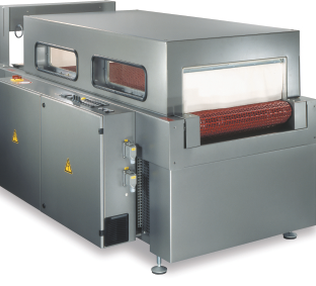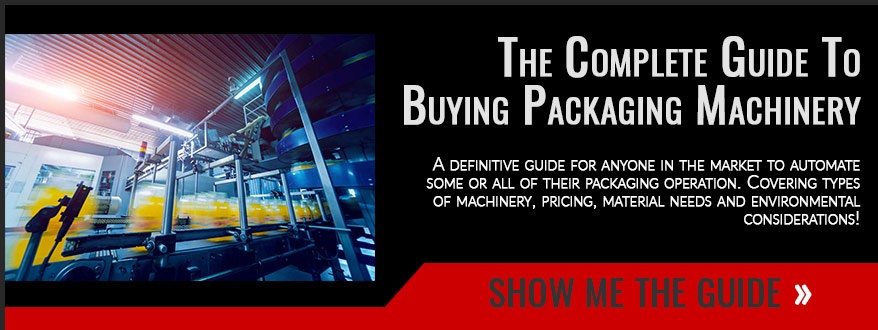How To Prevent Shrink Sleeves From Rising Up On Your Products
Are you feeling frustrated? I can tell.
I mean, I would be pretty annoyed as well. After months of searching for a way to make your bottled products stand out from the crowd, you discovered shrink sleeves.
At first glance, it seemed like the perfect way to set your products apart from the pack. With the ability to print full color, branded imagery, and crisp, clean lettering, it looked like the perfect packaging solution for your needs.
So, you ordered the required equipment and a stock of sleeves. Then, after the time-consuming implementation of new equipment and operator training, you finally started production.
Maybe it went OK for a while. Or, maybe your sleeves started rising up immediately. Either way, what was supposed to be the perfect addition to your packaging line has become an ongoing headache.
You have tired several troubleshooting items, but nothing seems to work. You have had enough. And, you are desperately seeking a solution to this problem so that you can get your products to market.
Thankfully, you have landed here on our blog. And, we are going to help you solve this problem.
With several decades in the flexible packaging industry, Industrial Packaging has provided shrink sleeve solutions to clients for many years. So, we have seen it all. And, we know the common causes for this problem.
This article will help you identify the problem areas with your shrink sleeve applications and provide potential solutions to get you back to properly packaging your products.
What Causes Shrink Sleeves To Rise Up On My Products?
First of all, the sleeves will shrink towards the heat. So, if you have a lot of airflow in your heat tunnel, it will start shrinking in the front and pulling or distorting the label's back. This is why many companies that use shrink sleeves use a steam tunnel. With these machines, the heat is evenly distributed, and you do not have difficulty achieving even shrink.
If your container has a ridge in the lower portion, you would want to aim some airflow to that area. This will lock the sleeve to the container for even shrinking. You can test this by using a heat gun to shrink the bottom of the sleeve before going into the tunnel.
If you have a non-ridged container, there may be an issue without having something for the sleeve to grab on to. If this is the case, you may want to try a heat-activated adhesive to adhere your container to the sleeve.
Lastly, your sleeves may not be long enough, and you are specifying the length based on your equipment. In this case, we would suggest raising your product on pucks to carry the container through the tunnel so the sleeve can shrink under the bottom to lock the label to the container.
Need Help Choosing The Correct Packaging Machinery?

Common Solutions To Rising Shrink Sleeves
Let's take a look at each of the solutions mentioned above in more detail.
Using A Steam Heat Tunnel Instead Of A Convective Or Radiant Tunnel
Chances are, you are currently using a convective or radiant tunnel. So let's look at these two types of machines and compare them to a steam shrink tunnel.
Convective Heat Tunnels
When using a convective shrink tunnel (AKA hot air shrink tunnel), the machine creates hot air, which is blown over the surface of a shrink sleeve that surrounds the item being packaged. The heat causes the sleeve to shrink around the product.
The hot air is applied to your containers with a module commonly known as a "baffle." These devices blow the heat in the required direction. This allows for the proper distribution of air.
While these machines are designed to help you distribute the air to focused portions of your container, they do not distribute the hot air as evenly as a steam tunnel.

Radiant Heat Tunnels
With radiant heat tunnels, the machine uses radiation rather than convection as the source of heat. The sleeves inside the tunnel absorb infrared radiation, which causes the sleeves to shrink. These machines are an excellent choice for shrink applications that require a lower shrink percentage.
Radiant shrink tunnels are most commonly utilized for shrinking heat seal bands and tamper-evident packaging materials. However, a steam tunnel or a convective tunnel would be the better choice for full-sized container sleeve applications.
Steam Heat Tunnels
Steam tunnels utilize steam in place of hot air to create the heat needed for shrinking sleeves. Steam tunnels are most often implemented for tamper-evident packaging applications. They produce an excellent evenly dispersed shrink resulting in clean, crisp, shrunken sleeves that perfectly match the shape of your container.
Although steam tunnels do not require pneumatics, they do require a water supply. Because of this, you must understand that these machines are more expensive due to the need for additional utilities.
Self-Contained Steam Heat Tunnels
Self-contained steam tunnels are specifically made to run high-end labeling and graphics applications. If you need to produce near-perfect registration, rich colors, precise typography, and superb consistency, this type of tunnel is your best bet.
Self-contained steam tunnels give you the ability to create ultra-high uniform heat transfers. In this respect, self-contained steam tunnels are superior to hot air tunnels.
Steam-based machinery allows for the production of high precision registration and superior shape forming. In addition, with this style of heat tunnel, the shrink sleeves will bond tighter and more evenly.
Self-contained steam tunnels are perfect when packaging containers under intense pressure and are also the tunnel of choice for companies running flammable products.
Using Ridged Containers Instead Of Smooth Containers
When using smooth containers for packaging your products, there is nothing for the sleeve to grab onto other than the container itself. If you are using a shrink tunnel other than a steam tunnel, you may be able to negate the rising of your shrink sleeves by switching to a ridged container.
The ridges on the container allow the sleeve to latch onto the the ridge which will hold the sleeve in place as the heat from the tunnel is shrinking the sleeve to your product.
Using Heat Activated Adhesives On Your Products
If using ridged containers is not an option for your business, there are other solutions to prevent your shrink sleeves from rising. One of the most common ways to negate your shrink sleeves from rising is to use a heat-activated adhesive on your products before sending them into your heat tunnel.
By applying the adhesive to your containers before entering the heat tunnel, you will ensure that the shrink sleeve sticks evenly to the container as it moves through the tunnel. Of course, using such an adhesive will be an extra cost to you and will require additional materials and machinery.
Using Puck Risers To Hoist Your Products
One final solution to your shrink sleeve issues would include implementing a puck. A puck is an object that is used to boost the height of your product.
A potentially simple solution to this problem is placing each of your containers on pucks before they go into your shrink tunnel. In this case, the added height may be all you need to ensure that your products get an even seal without the sleeve rising.
If None Of These Solutions Work, What Else Can You Do?
While the workarounds mentioned above will often solve the problem of rising shrink sleeves, they may not be the best solution for your unique predicament. If you are still dealing with rising sleeves after trying the items above, you will need to have your packaging line analyzed to find the source of the problem.
If that is the case, you may want to speak with one of our in-house packaging experts and discuss having a technician review and diagnose the problem at hand.
Our packaging experts will help you find a service technician certified for your machinery's optimization, even if you do not choose our technicians to fix your problem.
About Nathan Dube
As the Digital Marketing Specialist at Industrial Packaging, I am honored to create content for such a phenomenal company and work with one of the greatest teams in the Packaging Industry. Whether creating a video, writing blog posts or generating other pieces of content and multimedia, I am always excited to help educate and inspire our prospects and clients to reach their highest potential in regards to their packaging processes and needs.




